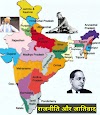Helicopter Bucket for
firefighting | Aerial fire Fighting by Helicopter
Aerial firefighting
Aerial firefighting is
the use of aeroplane/helicopter and other aerial resources to combat wildfires.
Helicopters and fixed-wing aircraft are among the types of aircraft used.
Aerial firefighters also include smokejumpers and rappellers, who drop into a
fire by parachute from a variety of fixed-wing aircraft or by rappelling from
helicopters. Water, water enhancers like foams and gels, and specifically made
fire retardants like Phos-Chek are just a few of the chemicals that can be used
to put out a fire.
Aerial Firefighting by Helicopter
In addition to buckets,
helicopters can be equipped with tanks (helitankers). Some helitankers also
come with a front-mounted foam cannon, like the Erickson AirCrane. Typically,
buckets are filled by dipping them into portable tanks, lakes, rivers, or
reservoirs. The adaptable Bambi Bucket is the most well-liked of the buckets.
Tanks can be topped off on the ground (by water tenders or truck-mounted
systems) or by syphoning water through a snorkel suspended from the ceiling
from lakes, rivers, reservoirs, or a portable tank. Variants of the Bell 204,
Bell 205, Bell 212, Boeing Vertol 107, Boeing Vertol 234, and the Sikorsky S-64
Aircrane helitanker, which has a snorkel for filling from a natural or
artificial water source while in hover, are all common firefighting
helicopters. A Bambi bucket is now used by the Mil Mi-26, the largest
helicopter in the world.
Helicopter Bucket
A helicopter bucket is a
unique bucket used for aerial firefighting that is suspended on a cable and
transported by the helicopter. The release valve on the bottom of each bucket
is operated by the helicopter crew. The crew releases the water to put out or
suppress the fire below once the chopper is in position. A drop is the term
used to describe each release of water. Because of the way the buckets are
made, a helicopter may hover over a body of water, like a lake, river, pond, or
tank, and descend the bucket into the water to fill it. This shortens the time
between subsequent operations by enabling the helicopter crew to operate the
bucket in far-off places without having to return to a regular operating base.
Helicopter Bucket Design
Buckets vary in size from
72 to 2,600 US gallons and can be stiff or foldable (273 to 9,842 liters). The
lifting capacity of the helicopter needed to use each version dictates the size
of each bucket. Some buckets have features like the capacity to pump water into
an interior tank or fire-resistant foam. Water sources as shallow as one foot
can be used by smaller collapsible buckets (30.5 cm). The term "monsoon
bucket" is commonly used and recognised as a general term around the
world. This kind of bucket is formally known as a helibucket in the United
States. Firefighting teams frequently use the unofficial term "Bambi
Bucket," which is a trademarked name, to refer to buckets made by various
manufacturers.
Bucket Variants
A-Flex Firefighting Monsoon Bucket
It is a collapsible bucket produced by A-Flex Technology.
It is collapsible bucket designed by Canadian Don Arney and produced by SEI Industries since 1983. Bambi Buckets were used in year 2011 to cool nuclear reactors in Japan after damage from a tsunami.
CLOUDBURST Fire Bucket
It Is a Collapsible bucket produced by IMSNZ Ltd.
FAST Bucket
It is a variable Drop type, this fire fighting bucket allows the pilot to select drop patterns for bush fires to canopy fires on their selection. manufactured by Absolute Fire Solutions.
HELiFIRE Monsoon Bucket
Collapsible type and free standing monsoon buckets developed & produced by Rural Fire Service in New Zealand.
Water Hog Bucket
It is a lightweight, collapsible type, free-standing bucket developed and produced by Aerial Fire Control Pty Ltd in 2001.
Also Read
Full Authority Digital Engine Control (FADEC) System Description & Operation




.jpg)


.jpg)




0 Comments